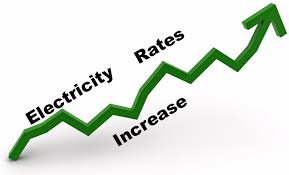 The
Electricity Tariff Fixation Committee (ETFC) is planning to revise the
electricity tariff within the next three months. Power rates are likely
to increase 10-15 percent. This is the second price hike in one and a
half years. In June 2012, the ETFC had raised the tariff by 20 percent
after a gap of 11 years.
The
Electricity Tariff Fixation Committee (ETFC) is planning to revise the
electricity tariff within the next three months. Power rates are likely
to increase 10-15 percent. This is the second price hike in one and a
half years. In June 2012, the ETFC had raised the tariff by 20 percent
after a gap of 11 years.
“We are giving serious consideration to
the proposed tariff hike,” said ETFC Chairman Ganesh Prasad Subba. “A
committee has been formed, and we will soon be publishing a notice in
the newspapers to gather feedback from consumers.”
On May 2013, the Nepal Electricity
Authority (NEA) had approved the management committee’s proposal to
increase the tariff by 20 percent on an average. The NEA had then gone
to the ETFC to get the plan okayed. The NEA has been pressing for a
tariff hike to stabilise its financial condition by equalising losses
and profits.
The NEA has proposed an average tariff
hike of 20 percent for all customers except for households consuming
less than 20 units of electricity monthly.
Apart from publishing a public notice,
the ETFC will hold a series of interaction programmes with consumers
before hiking prices. “The NEA has demanded a 20 percent price hike. The
tariff will be hiked after making a detailed study,” said Subba. “We
will also ask for the government’s approval, and if it is willing to
shoulder some of the cost, the tariff hike might be nominal.”
NEA Spokesperson Sher Singh Bhat said
that the NEA incurred a loss of Rs 4 billion in the last fiscal year,
and an increment in the tariff would help it to stay in good financial
health. According to Bhat, the proposed 20 percent increment in tariff
would allow the NEA to break even
“The last time power tariffs were hiked,
we had demanded a 40 percent raise,” said Bhat. “Since the rates went
up only 20 percent, a need to review the tariff has surfaced again.”
Apart from ballooning losses, appeals from independent power producers
for a higher power purchase agreement (PPA) rate too have necessitated a
tariff hike, the NEA said.
The government has been hesitant about
hiking electricity prices for fear of triggering public protests. The
political costs of jacking up power rates have also deterred the
government from doing so.
The NEA’s cumulative losses amounted to
Rs 14.31 billion even after the government wrote off a staggering Rs 27
billion last year. And it has been pestering the government to increase
the tariff to help bring down its losses.
Meanwhile, public pressure has been
mounting on the NEA to slash its operation costs instead of penalising
consumers for its inefficiency. Its officials have also been accused of
corruption, a charge that spread rapidly after its former acting
managing director and other officials were arrested by the Commission
for Investigation of Abuse of Authority (CIAA).
Meanwhile, the ETFC has been preparing a
long-term scheme under which power tariffs will automatically rise 5
percent annually. The plan also envisions charging different rates as
per the season – dry and wet – from the next fiscal year.
Although the ETFC Regulation allows it
to hike the electricity tariff by 5 percent annually based on a standard
formula, it has not been able to do so since it has not created such a
formula.
According to the ETFC, the formula will
be developed on the basis of various factors including the consumer
price index, inflation, industrial productivity, power purchase rate
(PPA) for developers, impact on power consumers and the exchange rate of
the US dollar.
Source : The Kathmandu Post
This should be implemented at the earliest. I see light at the end of the tunnel. Although the proposal is to increase 10 to 15 percent, I personally believe 20 percent would be reasonable. Anyways, "Something is better than Nothing"
No comments:
Post a Comment